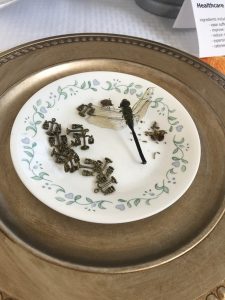“At the Table I: Red and Blue” is a space for thoughtful discourse about powerful issues like guns, health care, immigration, and education. Justice. And our self-image as heroes; Americans as the perennial “good guys”.
I’ve struggled to hold all of these issues in my mind. There’s just so much to think about right now, so much turmoil and change. It’s dizzying. I needed to see the issues in physical form, set as a dialogue among Americans.
Where do we have our best discussions? At the dinner table, of course.
“At the Table I: Red and Blue” features symbols for justice, nationalism, family, and a dozen other issues placed in serving dishes, set on dining tables.
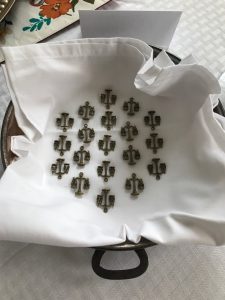
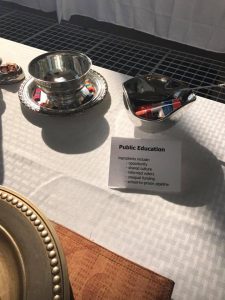
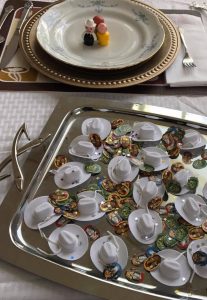
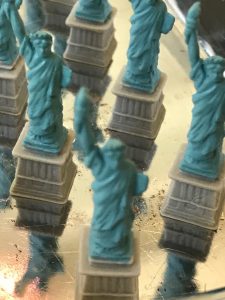
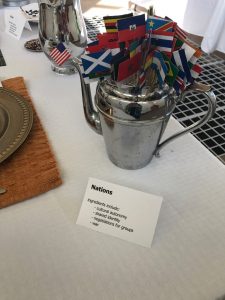
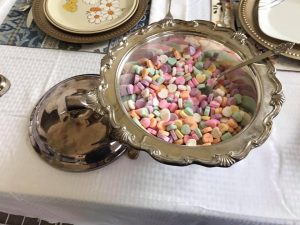
Placemats, napkins, plates and silverware suggest that people are being served. Because, in a sense, we are – if we watch the news or follow social media, we are served those issues on a daily basis.
There is a wide variety of place settings, because people with all styles and tastes belong at our American table.
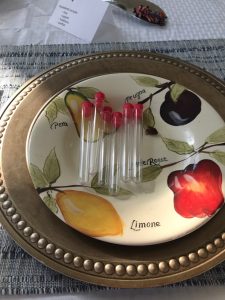
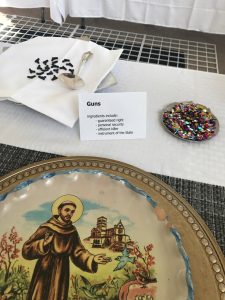
In addition to a variety of small, man-made objects, viewers discover real (dead) insects; something genuine from nature. They are simultaneously beautiful and repulsive sitting on plates, reminding viewers that nature exists beyond our control.
Red and blue chairs provide seating. Grids on the floor symbolize the gridlock in our government. The windows cast shadows in a grid pattern across the tables, floor, and walls. Being locked into that grid is powerful.
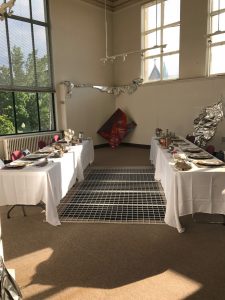
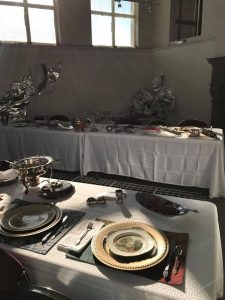
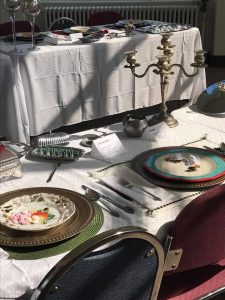
On the walls in the background, are six very emotion-laden paintings. They’re hung askew, left leaning, framed with aluminum foil that has been torn and left falling.
Regardless of one’s political leanings, we are all affected by the sense of conflict and discord. The heavy fear, the anger, the anxiety and sense of destruction.
A bubble machine activates the gap space and symbolizes the information bubbles that trap us.
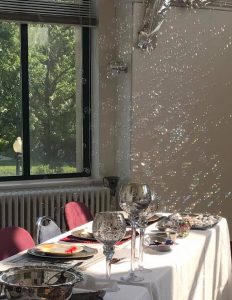
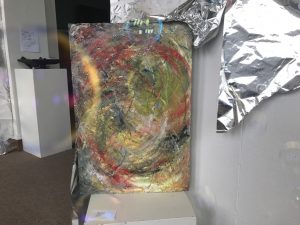
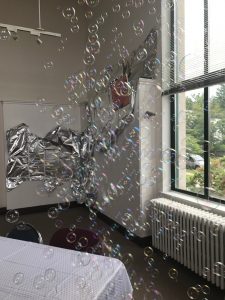
Our current culture is more chaotic and divided than I can ever recall. What frightens me more than the chaos is the lack of dialogue. There’s a subcurrent of violence, with civility barely in charge.
Where are we headed, if we can’t sit down and talk?
At the end of the exhibition, I took down the civilized place settings. I took down all of the tidy symbols of issues. I eliminated the dialogue and made the tables blank.
And then I put shattered dishes in red, white and blue onto the grids.
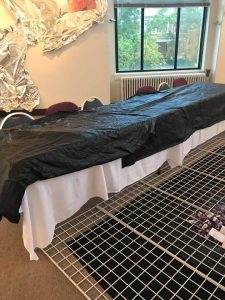
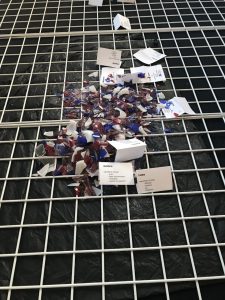
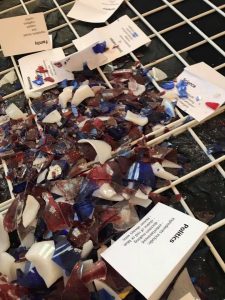
This was my first installation piece. Installation art means that the whole room is the artwork. Typically viewers can walk through and interact with installation art, seeing it from various angles. Some artists create installation artwork that changes over time; others have created things viewers can touch. Ann Hamilton, a professor at Ohio State University, is one of the most famous and successful installation artists working now. Her work inspired me to engage all of the senses and reach just beyond the horizon of consciousness.
Judy Chicago is another famous installation artist; her “Dinner Party” (1979) is one of my inspirations for “At the Table”. Chicago created distinctive place settings telling the stories of 39 famous women, from pre-history to the women’s revolution.
Many thanks to the Tippecanoe Arts Federation, Chris June, Cresta Cates, Kristy Laurent, and Stephanie McCullough.


